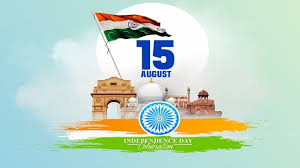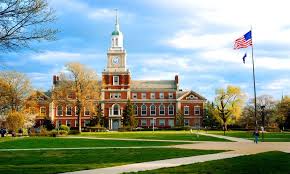On August 15, 2024, India will celebrate its 77th Independence Day, marking more than seven decades since the country broke free from British colonial rule. This day is not only a moment of pride for the world’s largest democracy but also a time for reflection, gratitude, and forward-looking optimism. As India stands tall as a global power, its Independence Day is celebrated with grandeur, reminding every citizen of the sacrifices made by countless individuals to achieve the nation’s freedom. The day serves as an occasion to honor the past, recognize present achievements, and envision a bright future for the country.
The Historical Context: A Journey to Independence
India’s struggle for independence was a long and arduous journey, spanning over a century of resistance against British rule. The East India Company established its dominance in India in the early 17th century, eventually giving way to direct British control by the mid-19th century. The revolt of 1857, often referred to as the First War of Independence, marked the beginning of a series of uprisings and movements that would eventually culminate in India’s independence in 1947.
The Indian National Congress (INC), founded in 1885, became the primary platform for Indian leaders to demand greater autonomy and eventually full independence from British rule. Leaders such as Mahatma Gandhi, Jawaharlal Nehru, Sardar Vallabhbhai Patel, Subhas Chandra Bose, and countless others played pivotal roles in galvanizing the masses and leading various movements against the British. Gandhi’s non-violent resistance, or Satyagraha, became the cornerstone of the Indian independence movement, emphasizing civil disobedience, non-cooperation, and peaceful protest.
The Quit India Movement of 1942 was one of the most significant milestones in the struggle for freedom. It called for an end to British rule and mobilized millions of Indians in a mass protest. Despite the repression by the British government, the movement intensified the demand for independence, leading to India finally achieving freedom on August 15, 1947. However, the joy of independence was marred by the partition of India and Pakistan, which resulted in one of the largest and most tragic mass migrations in history.
Commemorating Independence: National Celebrations
Every year, on August 15, the Prime Minister of India hoists the national flag at the Red Fort in Delhi, followed by a nationally televised address to the nation. This tradition began with India’s first Prime Minister, Jawaharlal Nehru, who delivered his iconic “Tryst with Destiny” speech on the midnight of August 14-15, 1947, as the country officially gained independence. The speech is remembered for its profound reflection on the struggle for freedom and the hopes for India’s future.
The Red Fort ceremony is the centerpiece of the Independence Day celebrations, attended by dignitaries, diplomats, and citizens. The Prime Minister’s speech typically highlights the government’s achievements, addresses key national and international issues, and outlines the vision for the coming year. The event also includes a grand parade showcasing India’s military might, cultural diversity, and technological advancements.
In addition to the main event in Delhi, Independence Day is celebrated with fervor across the country. State capitals hold similar flag-hoisting ceremonies, parades, and cultural programs. Educational institutions, government offices, and private organizations participate in the celebrations, often organizing patriotic events, competitions, and social service activities. Citizens decorate their homes, vehicles, and public spaces with the tricolor—saffron, white, and green—symbolizing courage, peace, and prosperity.
Honoring the Freedom Fighters: Remembering the Sacrifices
Independence Day is also a time to honor the countless freedom fighters who sacrificed their lives for the nation’s independence. Their contributions are remembered through various programs, speeches, and tributes across the country. Memorials, statues, and museums dedicated to these heroes see a significant influx of visitors, particularly students who are taught about the importance of remembering the past.
Mahatma Gandhi, often referred to as the “Father of the Nation,” remains the most iconic figure of India’s independence movement. His philosophy of non-violence and his leadership during the freedom struggle continue to inspire not only Indians but also people around the world. Alongside Gandhi, other prominent leaders like Jawaharlal Nehru, Subhas Chandra Bose, Bhagat Singh, Rani Lakshmibai, and Bal Gangadhar Tilak are remembered for their unique contributions to the freedom movement.
Local heroes and lesser-known freedom fighters are also honored during Independence Day celebrations. In recent years, there has been a growing recognition of the contributions made by women, Dalits, Adivasis, and other marginalized communities in the struggle for independence. Their stories are now being highlighted in schools, public speeches, and media, ensuring that the narrative of India’s freedom struggle is more inclusive and representative of the nation’s diversity.
India’s Achievements Since Independence: A Journey of Progress
Since gaining independence in 1947, India has made remarkable strides in various fields, emerging as a major player on the global stage. The country’s progress is a testament to its resilience, innovation, and the hard work of its people.
Economic Growth and Development
One of the most significant achievements of post-independence India has been its economic growth. From a primarily agrarian economy with a low GDP at the time of independence, India has transformed into one of the world’s fastest-growing economies. The economic reforms of 1991, which marked the beginning of liberalization, privatization, and globalization, played a crucial role in this transformation. Today, India is a major hub for information technology, manufacturing, and services, contributing significantly to the global economy.
The agricultural sector, which still employs a large portion of the population, has also seen substantial growth. The Green Revolution in the 1960s and 70s, spearheaded by leaders like M.S. Swaminathan, helped India achieve self-sufficiency in food production. Today, India is one of the largest producers of rice, wheat, pulses, and dairy products in the world.
Scientific and Technological Advancements
India’s advancements in science and technology have been nothing short of extraordinary. The country’s space program, led by the Indian Space Research Organisation (ISRO), has achieved numerous milestones, including the successful Mars Orbiter Mission (Mangalyaan) and the Chandrayaan missions to the moon. In 2024, India’s space endeavors continue to inspire the world, with ambitious projects aimed at exploring the solar system and beyond.
India’s technological prowess extends to the field of information technology, where the country has become a global leader. Cities like Bengaluru, Hyderabad, and Pune are now recognized as major IT hubs, contributing to India’s reputation as the “IT capital of the world.” Indian tech companies and professionals have made significant contributions to global technological advancements, from software development to artificial intelligence and cybersecurity.
Social and Cultural Progress
India’s social progress since independence is reflected in its efforts to improve education, healthcare, and social justice. The country has made significant strides in reducing poverty, improving literacy rates, and expanding access to healthcare. Programs like the National Rural Health Mission, the Sarva Shiksha Abhiyan, and the Mahatma Gandhi National Rural Employment Guarantee Act have had a profound impact on the lives of millions of Indians.
Culturally, India remains a vibrant and diverse nation, with its rich heritage reflected in its art, literature, music, and cinema. Indian cinema, particularly Bollywood, has gained international acclaim, with Indian films and actors making a mark on the global stage. Indian literature, both in English and regional languages, continues to produce world-renowned authors and poets, contributing to the global literary landscape.



